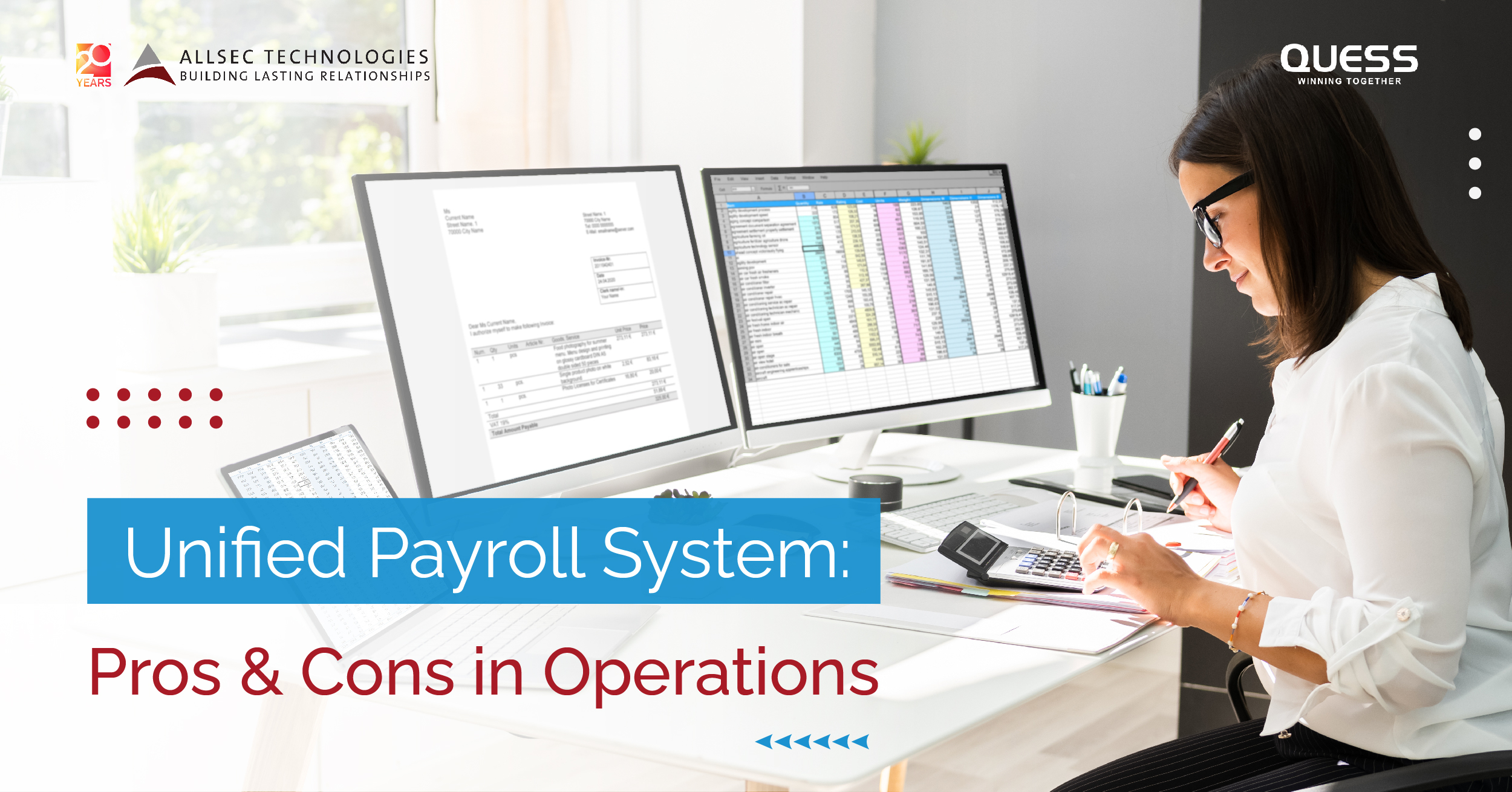
Unified Payroll System: Pros and Cons in Operation
When compliance and payroll are outsourced to multiple partners through SaaS payroll, it results in a collapsible, fragmented system. Errors may arise due to incompatibility of compliance and payroll operations, poor compliance tracking, or miscommunication, all of which may lead to unintentional legal consequences such as penalties, imprisonment or termination of business. To cite a prominent case with heavy legal penalties, the payment of $26M paid by British Airways for failing to comply with GDPR regulations.
Compliance encourages business growth by shifting focus from administrivia to productivity. It also contributes to creating a seamless organizational structure with a friendly working environment.
Payroll in the age of automation
The definition of employee engagement, payroll and security has changed since digitization. Automation, digitization and AI have transformed payroll software from primitive Excel sheets into sophisticated and indispensable solutions. Readily available solutions in the market eliminate the laborious tasks of decentralized processes and manual reporting.
Unified payroll system – Your own defence
Laissez-faire simply won’t do anymore as stringent labour laws are passed. Businesses must have a compliance management system and payroll to avoid legal challenges.
A unified payroll system satisfies the organization’s prime operational needs such as:
- Adherence to labour laws
- Minimization of administrivia
- Productive workforce engagement
- Inclusive workforce – involving managerial employees and contractual workers
Due diligence to achieve a compliant organizational ecosystem needs a unified payroll system by payroll management companies. To help decision making easier, here are a few pros and cons of a unified system.
The PROS:
Time: Time is atrophied in administrative operation and manual labour. A unified system gives businesses the liberty to invest time in employee engagement, upskilling and strategizing business operations. Thus reducing manual labour in trivial matters.
Return on investment: Unified payroll’s ROI comes in the following forms:
- Compliant business
- Productivity
- Avoiding unintentional legal penalties
- Time invested to grow the business
Workforce ownership: Employees remain accountable even in the absence of supervision. Automated HR processes deal with every activity from punch to paycheck, thereby also reducing employer-employee disputes.
Decision making: Digitized and automated report generation make decision-making more efficient. The errors from manual reports are effaced.
Efficient business operations: Unified payroll catapults business growth by contributing to the seamless execution of business processes. Business is never untethered from productivity.
The CONS:
Implementation time: During the transition to a unified payroll system, day to day activities must continue unhindered. And the lead time to process and implement a unified payroll system is fairly greater. But the right partner aids seamless transition and aids rapid adoption of the system.
Cost: Pricing models are typically structured around organizational requirements. The affordability of this sophisticated process depends on the purchasing power of the organization.
The Verdict
Integrating compliance management systems, statutory compliance, and payroll can resolve obstacles that slow down an organization’s growth graph. Some of these bottlenecks sometimes remain a mystery until the efficiency of a sophisticated system comes into play. A unified system optimizes business processes, enhances productivity, and ensures compliance at every level.
Adopting such a system can be a cakewalk with an outsourcing partner like Allsec. We understand compliance, and the needs of organizations, and come with technological wherewithal to aid the transformation. To know more about HR Outsourcing and Compliance Management, reach out to us.



